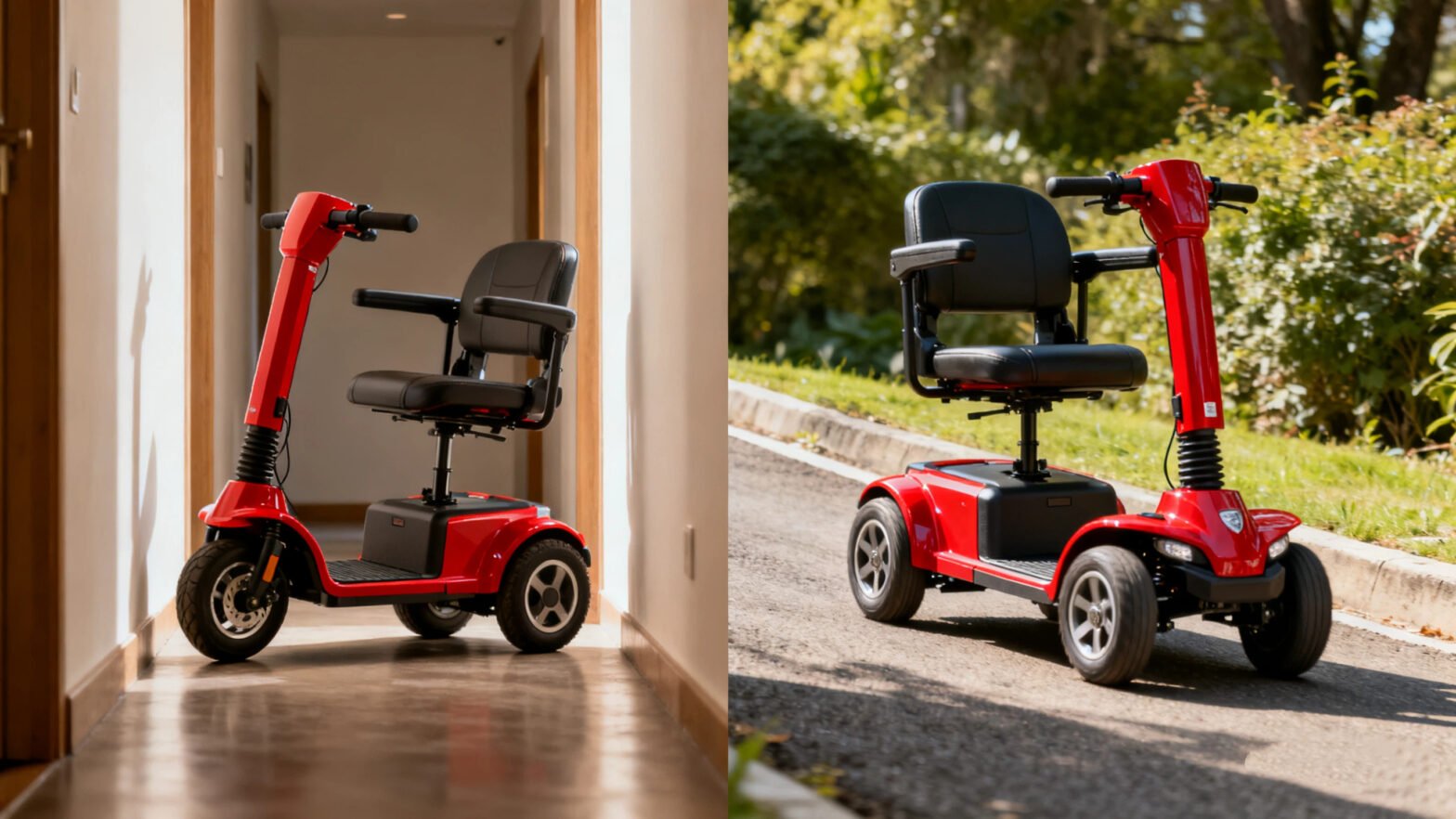
Choosing a mobility scooter starts with one critical question: which keeps you safer? The answer depends on how you use the scooter, where you ride it, and your physical needs. 3-wheel and 4-wheel models each have safety strengths tied to specific scenarios. Below is a clear breakdown of their safety features, one focus at a time.
On smooth, flat ground—like home floors or mall hallways—4-wheel scooters offer stronger stability. Their wide, four-point base distributes weight evenly across the ground. This means if you shift your body slightly (e.g., reaching for a bag) or hit a tiny bump, the scooter is less likely to tip. For users with balance issues (such as from arthritis or vertigo), this steady base reduces the risk of sudden falls. Even if you pause and lean on the handlebars, the four wheels keep the scooter grounded.
3-wheel scooters struggle with stability on flat ground compared to 4-wheel models. They have a narrow base, with one wheel at the front and two at the back. This design makes them prone to tipping if you make sharp turns too fast or lean to one side. Modern 3-wheel scooters add small “anti-tip” wheels to fix this, but they only work if you ride slowly and avoid sudden moves. If you tend to move quickly indoors or shift around on the seat, a 3-wheel scooter raises more safety concerns on flat surfaces.
In tight spaces—like small apartments, narrow doorways, or crowded stores—3-wheel scooters are the safer choice. They have a small turning radius (often just 36 inches) compared to 4-wheel models (which need 48+ inches to turn). This means you can spin around in tight hallways without hitting walls. You can also weave through busy crowds (e.g., a packed grocery store) without colliding with people or carts. For users who spend most of their time indoors, this agility prevents accidents that bulky 4-wheel scooters might cause.
In open areas—like wide sidewalks, parking lots, or quiet streets—4-wheel scooters offer better safety through steady control. They track straight without drifting, so you don’t have to constantly adjust the steering. This is helpful for longer rides (e.g., going to a nearby park) because it reduces fatigue and the risk of veering into curbs. The wide base also handles heavy loads (like a bag of groceries or a medical kit) better. When you carry weight on a 4-wheel scooter, it spreads across four points, so the scooter won’t tip from uneven weight.
For outdoor use—like gravel paths, park trails, or cracked sidewalks—4-wheel scooters are safer. Their two front wheels absorb shocks from bumps or holes in the ground. The wide base also stops the scooter from getting stuck in gravel or mud. Many 4-wheel models even have thick, air-filled tires that grip wet or slippery pavement (e.g., after rain). If you often ride outside, this terrain adaptability means fewer jolts and lower tipping risk.
3-wheel scooters are not safe for rough outdoor terrain. Their single front wheel can easily get caught in potholes, cracks, or grass clumps. This can jolt you forward or make the scooter tip sideways. They only work well on smooth outdoor surfaces—like paved walkways in a mall parking lot or well-maintained park paths. If you need to ride on unpaved ground (e.g., a dirt trail to a friend’s house), a 3-wheel scooter will put you at higher risk of accidents.
If you need to transport your scooter (e.g., loading it into a car or storing it in a closet), 3-wheel models are safer. They are lighter (usually 50–70 pounds) compared to 4-wheel scooters (which can weigh 100+ pounds). Lifting a heavy 4-wheel scooter can strain your back or make you fall. With a 3-wheel scooter, you can carry it alone or fold it easily. This reduces “secondary” safety risks—like injuries from moving the scooter—for users who live alone or travel often.
For users who weigh more (over 300 pounds), 4-wheel scooters are the safer option. Most 4-wheel models have higher weight limits (up to 400 pounds or more). 3-wheel scooters usually max out at 300 pounds. If you overload a 3-wheel scooter, it can tip or break the wheels. The wide base of 4-wheel scooters also distributes heavier weight evenly, so you won’t feel unstable when riding. For users with larger frames, this capacity is a key safety feature.
There’s no “one safer” scooter—only the one that fits your life. If you ride mostly indoors, need portability, or have a smaller frame, a 3-wheel scooter keeps you safe. If you ride outdoors, have balance issues, or need higher weight capacity, a 4-wheel scooter is better. Test both if you can: ride them on the surfaces you use daily, and see how easy they are to steer. The safest scooter is the one that feels natural to you—because when it fits, you’ll ride with confidence.
Copyright@ 2025 Nanjing Kangni Smart Technology Co., Ltd. All Right Reserved.